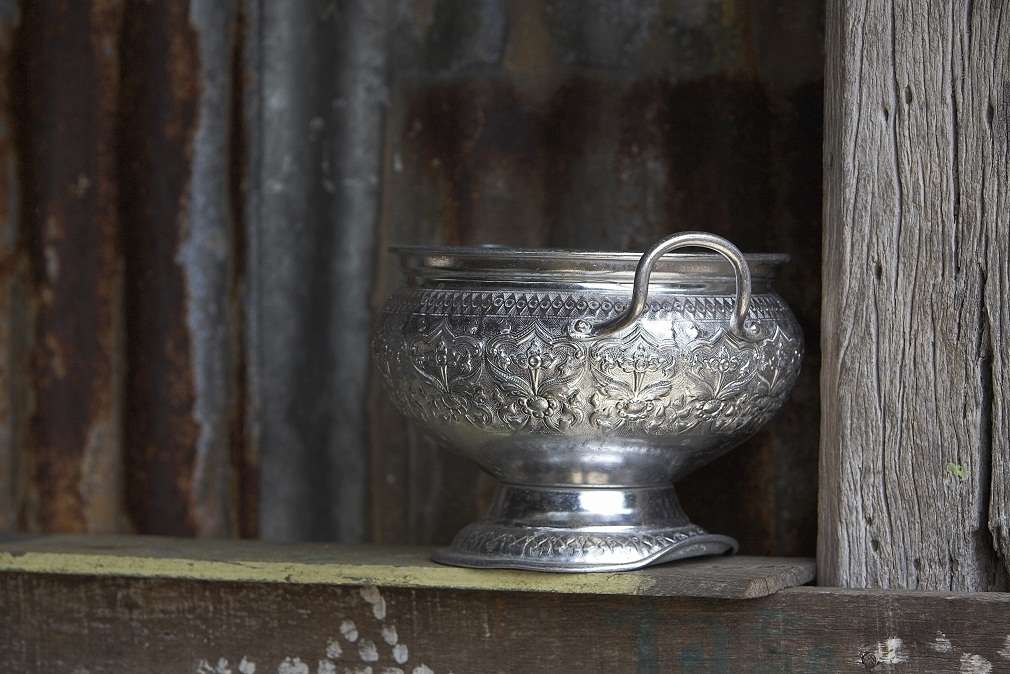Want to buy genuine Thai silver bowls? Want to know how much you can expect to pay for Thai silver bowls and where to buy them? Our guide to Thai silver bowls gives you the facts & information you want to know.
Thai craftsmen produce beautiful designs in silver of various shapes and sizes; their skills are highly developed in silver working. In addition, the cultural motifs associated with Thai bowls are a source of considerable pride. The craftsmanship of this manual skill is considered amongst the highest available.
There are distinct patterns and shapes to help identify these Thai pieces that are also available in a combination of Burmese, Chiang Mai and Lao styles. Items from Bangkok are usually referred to as Thai silver no matter what their origin.
It is difficult to tell whether a Burmese style bowl was made in Chiang Mai or Mae Hong Sorn because the style of the bowl may come from Burma or a person of Shan descent that could have worked in a local silver shop.
Chiang Mai and Chiang Rai were part of an independent country for well over two hundred years. The Lanna Thai kingdom was a state of culture, making Thai silver bowls for over one thousand years, and the designs of the artwork became associated with the region.
Silver work came much later in the north and as a result of Burmese and Shan methods, different styles began to develop in the thirteenth century. Traditional silver work of Sukhathai and Lanna rapidly developed in the fourteenth centaury, by the time of Thai Ayutthaya kingdom in the fifteenth century, the combination and techniques were prominent.
Silver bowls from Northern Thailand are amongst the most famous in Asia, the methods and styles are very different from Southern Thai silver and Thai silver bowls vary immensely.
History of Thai Silver Bowls
Northern silver dates back to the thirteenth century, and with the fall of Pagan in Burma, hundreds fled the war that took place in Lanna. They moved to Northern Thailand, there they practiced a new technique and with the inherited Burmese tradition Shan attributes slowly became Chiang Mai silver.
Burmese silver work first began in the sixth and seventh century A.D, Pyu coins made of silver were used for trade and gradually the designs of Burma began to appear on Thai silver. Thus, the lavish designs of Thai silver bowls during and after the Pagan period was extremely consistent.
In Burma, a colorful variety of silver was developed adding to the craft. Captured slaves from the war in Siam were used in forced labor and the most valuable of the slaves were craftsman. As it was clearly to their advantage to use the long line of traditional silver craftsmen to produce the silver bowls.
This Burmese forced labor of the craftsmen resulted in a unique craft style including silver bowls that changed and developed. When Burma occupied Lanna from the sixteenth to the eighteenth centaury the Burmese people transported craftsmen to different parts of northern Thailand, it was during this time that the change and the development in the Thai silver bowls and other crafts such as lacquer-ware also came home to the North of Thailand.





